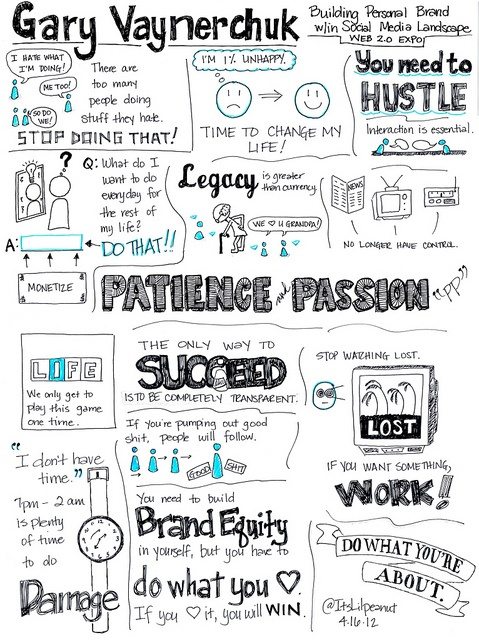Success Advice
The Multi-Millionaire ‘Gary Vaynerchuk’ Sketch Notes For Success

This Sketch Note was created by @itslilpeanut based off the web 2.0 speech by Multi-million dollar social media wizard and video blog all-star ‘Gary Vaynerchuk‘, on successfully building your personal brand in the social media landscape.
Gary Vaynerchuk is electric on the mic and is over flowing with knowledge when it comes to building your business successfully through Social Media platforms. Checkout the Sketch Notes along with a video presentation by Gary Vaynerchuk and get familiar with some interesting insight.
Gary Vaynerchuk’s Business Success Advice

Graphic created by @ItsLilPeanut
Gary Vaynerchuk – Web 2.0 Expo (Classic Social Media Speech)
Did You Know
The Success Patterns You Inherited (And Didn’t Notice)
Your family history may hold the key to why you think, act, and feel the way you do today.

Who are you? Your experiences and your family’s narratives and legacies contribute to your identity. Your ancestry contains individual traits and forces that have been inherited over the years. It also carries the fights and victories of your forebears and older family members. (more…)
Shift Your Mindset
11 E’s That Define Every Great Leader And Why Most People Miss Them
If you’ve ever felt the pull to lead, this is your roadmap to turning inner potential into lasting influence.

What Is Leadership, Really?
Leadership is far more than a title or position. It’s the ability to envision a future, inspire others, and align people toward a shared goal. (more…)
Personal Development
This Silent Habit Might Be Sabotaging Your Career
Your temper might be costing you more at work than you realize. Here’s why it matters.

You may be the last to know that you’re walking around with a giant chip on your shoulder. Meanwhile, your coworkers are giving you a wide berth. (more…)
Change Your Mindset
The One Leadership Habit That Separates the Great From the Forgettable
True leaders don’t just speak their values, they live them, proving that integrity is the foundation of lasting influence.

Leadership isn’t defined by titles, speeches, or charisma; it’s defined by action. The most respected leaders in history didn’t just preach their values; they lived them. (more…)
-

 Change Your Mindset4 weeks ago
Change Your Mindset4 weeks agoWork-Life Balance Isn’t a Myth: Here’s How to Actually Make It Happen
-

 Change Your Mindset4 weeks ago
Change Your Mindset4 weeks agoThe Four Types of Happiness: Which One Are You Living In?
-

 Life3 weeks ago
Life3 weeks ago9 Harsh Truths Every Young Man Must Face to Succeed in the Modern World
-

 Success Advice3 weeks ago
Success Advice3 weeks agoInside the TikTok Resume Hack That’s Fooling Recruiters (For Now)
-

 Change Your Mindset2 weeks ago
Change Your Mindset2 weeks agoThe One Leadership Habit That Separates the Great From the Forgettable
-

 Personal Development2 weeks ago
Personal Development2 weeks agoThis Silent Habit Might Be Sabotaging Your Career
-

 Business1 week ago
Business1 week agoWhy Your E-Commerce Fulfilment Is Probably Broken (And How to Fix It)
-

 Shift Your Mindset5 days ago
Shift Your Mindset5 days ago11 E’s That Define Every Great Leader And Why Most People Miss Them



























3 Comments